Concrete Projects To DIY (And When To Hire A Pro)
 To savvy homeowners, DIY concrete projects can seem very appealing. And yes, the idea of saving money and tackling a major home improvement is definitely cool. But slow down … concrete is tricky to work with and requires equipment beyond your household toolkit. Learn which concrete projects to handle alone, and which to leave for the pros.
To savvy homeowners, DIY concrete projects can seem very appealing. And yes, the idea of saving money and tackling a major home improvement is definitely cool. But slow down … concrete is tricky to work with and requires equipment beyond your household toolkit. Learn which concrete projects to handle alone, and which to leave for the pros.
Popular Concrete Projects
Repair minor problems yourself, like loose guardrails or chips in driveways and steps.
- Find a contractor if you need correction of the problem’s source in addition to concrete repair, as when water is damaging a foundation. And to fix sagging posts or load-bearing walls, professionals can push up the structure with a jacking system.
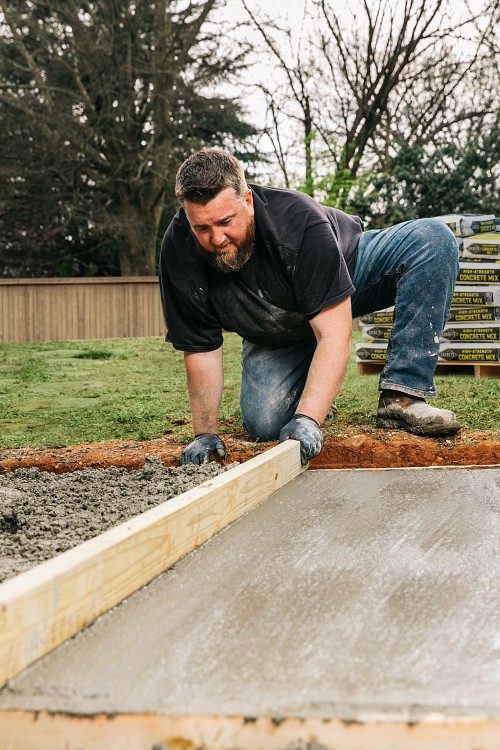
- Slab
Slab installation is one of the most common residential concrete projects. Decide whether to DIY based on slab size. Concrete isn’t an easy-to-maneuver substance. A 10’x10’ slab 4” thick takes sixty bags of 80-pound concrete mix, nearly 1.5 pallets. How will you get that home and then to the actual jobsite?
- When the slab project exceeds a small sidewalk or shed base, go with a concrete professional.
- Fence Posts
This lends itself well to do-it-yourself. The concrete is underground, avoiding esthetic concerns. Most mixes have clear directions for blending in the correct amount of water. Sakrete’s Fast-Setting Concrete Mix is even easier -- just pour water into the posthole, dump in the mix, and it self-hydrates.
- For a small decorative fence, go ahead and DIY, but when setting fence posts around 10 acres, hire a pro.
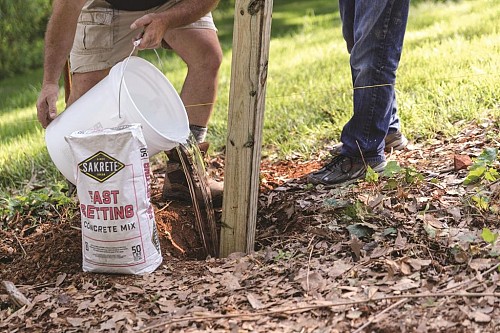
- Deck or Balcony Posts
Check local code and frostlines, which dictate how to dig. Use premade forms to simplify this project if you’re talking 3, 4, or 5 posts.
- Call in a concrete contractor? Depends on the number of posts and how deep you’re digging.
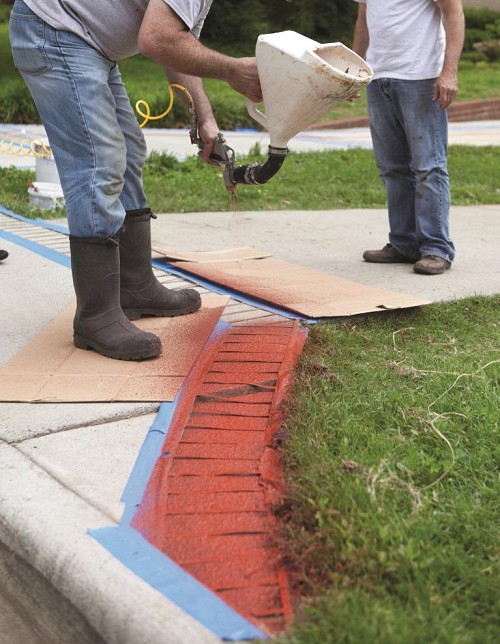
- Stenciling
Practice before stenciling your driveway or patio; try several little sections till you’re happy with the effect. Here’s a simple method: Lay down your stencil, pour Flo-Coat Resurfacer over, and lift the stencil.
- Don’t exceed your DIY comfort level. Choose a concrete specialist for large-scale stenciling.
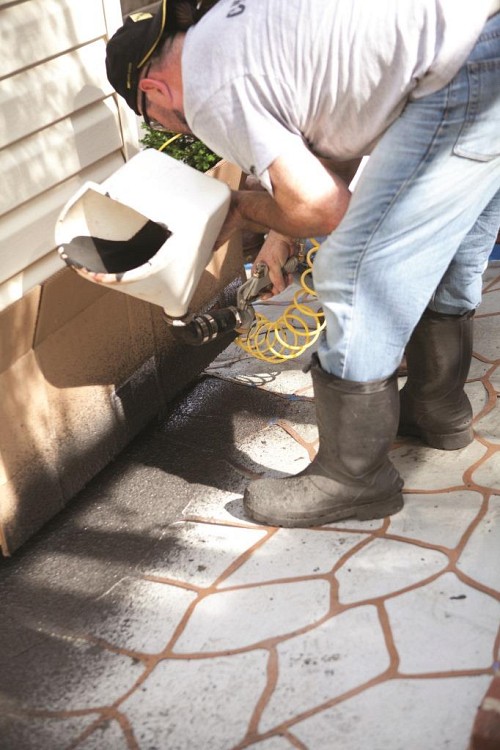
- Block Wall
For a “stucco”-finished wall, Sakrete Surface Bonding Cement allows you to run one course of 8x8x16 blocks, ensure it’s level, and then dry-stack courses however high you want (butting joints right up against each other, without mortaring).
Trowel surface bonding on top and both sides, like icing a cake. The fiber-reinforced bonding protects against cracks, while covering the wall completely makes it stronger than using mortared joints. Surface bonding can be colored, and finished with masonry brushes or brooms when almost dry.
- To decide whether you’ll need a pro, consider size, scale, and permit requirements.
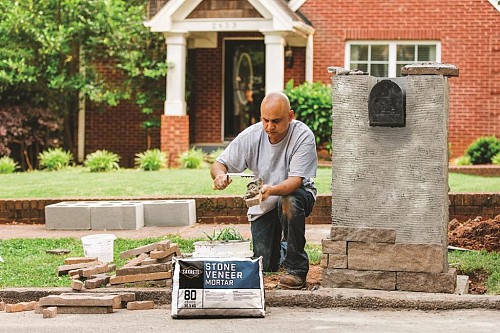
- Stone Veneer Mortaring
Trendy stone, brick, or porcelain veneer, cut thin, produces a textured surface which beautifies backsplashes, fireplace surrounds, retaining walls, and more. Apply stone veneer mortar to the material’s back as easily as buttering bread, position the veneer, and hold steady 5-10 seconds. Polymer-modified, this mortar sticks well to concrete, stucco, or lath.
- Hiring a mason is recommended for large, intricate projects and for drywall.
Advantages of DIY
- Cost savings
- Feeling of accomplishment
- Your own timetable
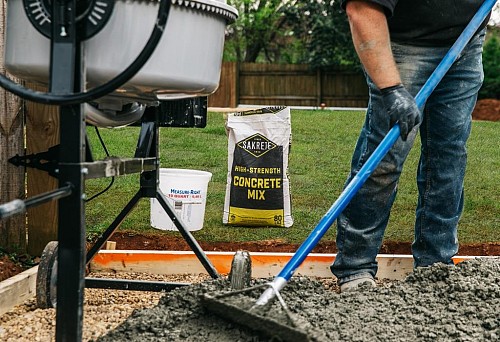
Advantages of Hiring a Pro
- Concrete mixes are pro-oriented, in strength, weight, and performance
- Full range of equipment – trowels, joiners, mixers,skid-steer loaders, and other machinery
- Contractors can visualize out-of-the-box solutions
- Experienced pros think 2 turns around the corner, not just what’s right in front of them, asking “Where will the water go?”, “How can I install electricity?” etc.
Good Beginner Concrete Projects
Think FLAT, nothing horizontal. A small pad or sidewalk is a good newbie project: simply excavate the ground, form it up, install a gravel base, and pour concrete. This will give you a feel for concrete drying speed, set time, and surface finishing.
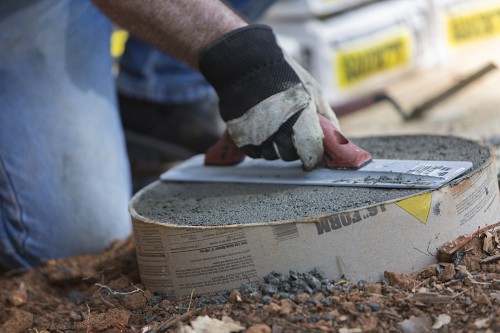
Tips For Successful Concrete Projects
- #1 for every construction project, DIY or pro: a sound foundation. Ensure water flows away from the foundation, or install plenty of gravel for water to move through. Otherwise the concrete will eventually break down.
- Don’t rush to start. Plan carefully, assembling all tools and forms beforehand. Once your concrete’s mixed with water, the clock is ticking.
Thanks to Sakrete’s Cory Olson for expert advice.
Laura Firszt writes for networx.com.
Looking for a Pro? Call us (866) 441-6648

Concrete Average Costs
Concrete Contractors Experiences

Concrete Storage Pad And Sidewalk, Built Fast And Well For A Fair Price

New Stairs And Roof Installation Are The Perfect Deck Upgrade



